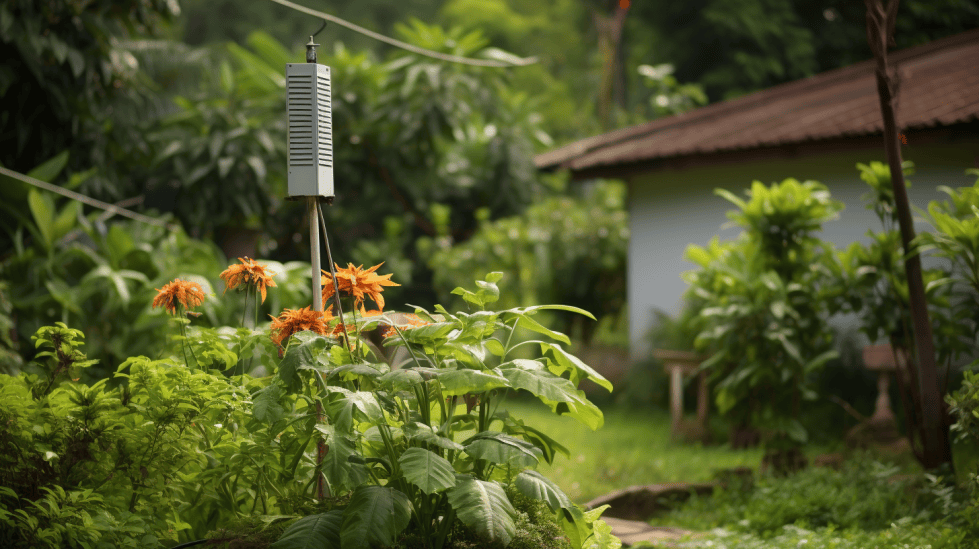Electroculture Gardening for Beginners
Electroculture gardening is an ancient practice that uses the earth’s atmospheric energy to increase plant yields and promote healthier growth. By understanding various electroculture techniques and implementing them in our own gardens, we can take advantage of the natural energy around us. This method has gained popularity in recent years due to its potential to improve plant resistance to pests and diseases, as well as its positive effects on plant roots and soil health.
As a beginner interested in electroculture gardening, it is crucial to familiarize ourselves with the concept, its background, and variations in practice. Through community interest and acceptance, we can learn from others who have successfully explored this method and overcome practical considerations associated with implementing electroculture in their gardens. When getting started, it is essential to have a clear understanding of the benefits this gardening technique can bring to our gardens and how it works to combat pest infestations.
Key Takeaways
- Electroculture gardening utilizes the earth’s atmospheric energy to increase plant yields and promote healthier growth.
- Beginners should familiarize themselves with the concept, background, and variations in electroculture practice for successful implementation.
- This gardening technique offers benefits such as improved plant resistance to pests and diseases, and positive effects on plant roots and soil health.
Concept of Electroculture Gardening
I have come across an innovative method called electroculture gardening, which utilizes the power of electricity to enhance plant growth. This ancient practice has been around for centuries and is known to tap into the true potential of electroculture to increase crop yields. It revolves around harnessing the earth’s atmospheric energy and combining it with the life force of our plants in order to keep them healthy and thriving.
It’s fascinating to learn that the electroculture system is based on the idea that telluric currents of the earth play a crucial role in plant growth. These currents continuously flow through the ground beneath our feet and can affect the energy of the earth on which our plants grow.
Electroculture gardening techniques make use of this knowledge to manipulate these telluric currents to boost plant growth. By exposing plants to electricity, either directly or indirectly, I can create a conducive environment for them to grow and flourish.
One method I have learned is to build an electromagnetic field around the plant. This can be achieved using a range of materials and techniques, such as electrifying the plant itself, the water it receives, or the soil in which it is planted. By doing this, I can optimize the energy distribution within the plant, enabling it to grow stronger and healthier.
In my experience, taking advantage of the life force and energy of the earth through electroculture gardening has proven to be a rewarding and remarkable approach to plant care. Although it may seem unconventional, the science and benefits behind this method exhibit its efficacy and potential in revolutionizing the way we cultivate our gardens.
This neutral and helpful method, when applied correctly and carefully, can help me elevate my gardening practices while embracing the natural power within our earth’s currents. As I continue to explore and utilize electroculture gardening techniques, I look forward to discovering even more effective and sustainable ways to grow healthy and bountiful plants.
Understanding Electroculture Techniques

Use of Electrical Currents
In electroculture, I’ve found that electrical currents play a major role in enhancing plant growth. These currents can stimulate root development and increase nutrient uptake, leading to healthier and more robust plants [1]. By introducing even a small amount of electric current to the soil, I’m able to achieve improved growth rates and overall better crop performance.
Role of Electromagnetic Fields
Electromagnetic fields (EMFs) are another key component in electroculture techniques. From my experience, these fields impact plant growth by increasing cell division rates, boosting photosynthesis efficiency, and reducing stress [2]. By harnessing the power of natural or artificially created EMFs, I can create an environment that fosters improved plant health and development.
Importance of Atmospheric Antennas

Atmospheric antennas are devices designed to capture the Earth’s free atmospheric energy and direct it to plants. These antennas can take various forms, like copper rods or metal meshes [3]. I’ve found that integrating atmospheric antennas into my garden setup helps channel additional energy into the soil, fostering an environment that encourages stronger plant growth.
Creating a Simple Antenna
Creating a basic atmospheric antenna for my electroculture garden is rather straightforward. I simply need materials such as copper or aluminum rods, wire, and insulators. One method I’ve used involves inserting metal rods into the ground around my garden, connecting them with insulated wire [4]. This setup serves to gather the Earth’s natural energy and deliver it to my plants, resulting in a noticeable improvement in their health and growth.
Getting Started with Electroculture
Electroculture gardening is an exciting and innovative way for beginners to boost plant growth. In this section, I’ll be discussing how to get started with electroculture gardening, including locating materials, assembling the antenna, and placing the antenna.
Locating Materials
Before starting, it’s essential to gather the necessary materials for your electroculture antenna. Some of the materials needed include copper pipe, copper wire, and wooden dowels. These can be found at stores like Home Depot or Ace Hardware.
For the antenna, I recommend using a heavier gauge copper wire, because it conducts electricity better. Copper coils can also be used for additional conductivity. A local piece of wood or wood dowels can be used as the base for your antenna.
Assembling the Antenna
To assemble the antenna, follow these simple steps:
- Measure and cut the copper pipe: The copper pipe will act as the main component of the antenna. You’ll need to determine the height based on your garden’s size and cut the pipe accordingly.
- Wrap the copper wire around the pipe: Start at the base and wrap the copper wire all the way to the top of the pipe. It’s essential to wrap it tightly so it stays in place.
- Attach the wooden dowels: Attach two wooden dowels to the top and bottom of the copper pipe using hand copper or a similar fastener. The dowels provide extra support and keep the antenna upright.
Place the Antenna
Once the antenna is assembled, it’s time to place it in your garden. Here are a few tips for optimal antenna placement:
- Choose a central location: Place the antenna in the center of your garden for maximum coverage. This ensures that all plants receive a fair share of atmospheric energy.
- Ensure proper grounding: Attach one end of the copper wire to the base of the copper pipe and the other end to a grounding rod. Make sure the grounding rod is pushed deep into the soil to establish a strong connection.
- Be mindful of sunlight: Make sure the antenna doesn’t cast a shadow on your plants by positioning it away from the direction of the sunlight.
By following these simple steps, I have successfully installed an electroculture antenna in my own garden. Remember to maintain proper placement and keep an eye on your plants’ progress as they benefit from this ancient practice.
Benefits of Electroculture Gardening

Potential Impact on Crop Yields
In my experience with electroculture gardening, it has shown potential in increasing crop yields by stimulating the natural electrical processes in plants, such as nutrient uptake and absorption. Some studies indicate that there might be an association between electrical signaling and plants’ responses to environmental stimuli, which could contribute to higher yields and quality in the long run [1].
Reducing Use of Pesticides and Chemical Fertilizers

I have noticed that practicing electroculture can contribute to a decrease in the use of pesticides and chemical fertilizers. By enhancing nutrient absorption and overall plant health, electroculture gardening helps plants become more resistant to pests and diseases. As a result, it reduces the need for chemical interventions, promoting a more sustainable and eco-friendly gardening practice [2].
Promoting Healthy Plant Growth
When I apply electroculture techniques, it has positively impacted the health and vigor of my garden. The improvement in nutrient uptake makes plants stronger, and when combined with proper care and high-quality soil, electroculture gardening can lead to healthier, more resilient plants [3].
Transforming Gardening Practices
Electroculture gardening has transformed the way I approach my gardening practices. Implementing techniques such as magnetic antennas, Lakhovsky coils, and using magnetized water has not only made gardening more enjoyable but also requires less work in terms of maintaining my plants. Moreover, it saves me from the excessive heat, as I find my garden stays healthier in extremeweather conditions as well [4].
Background and History of Electroculture
Electroculture is an ancient practice that dates back to 1749 when Abbe Nollett first introduced the concept of using the earth’s atmospheric energy to improve crop yields. In the 1920s, Justin Christofleau further developed it, and by the 1940s, Viktor Schauberger added his expertise to the field. I find this history fascinating, as it demonstrates the enduring potential of this gardening technique.
Over the years, electroculture has evolved significantly. In its early stages, scientists were primarily focused on understanding the effects of electricity on plant growth. They sought to stimulate germination, enhance growth speed, and increase crop yields in various plant species. The early results were promising, which encouraged further research and development. Today, electroculture has become a more accessible method for individual gardeners, thanks to the plethora of resources and practical guides available, such as Justin Christofleau’s practical guide.
Recently, there has been a resurgence in interest in electroculture, as it offers a practical alternative to traditional gardening methods for those seeking sustainable and environmentally-friendly options. This technique uses energy that is constantly present and surrounding us, also sometimes referred to as Chi, Prana, Life force, or Aether. By harnessing this energy, electroculture allows for healthier crop growth without the need for pesticides, manure, or fertilizers. This innovation is especially relevant in light of prevalent environmental issues and the desire to decrease our reliance on chemicals.
Variations in Electroculture Practice
Northern Hemisphere Electroculture
In the Northern Hemisphere, I’ve found that it’s important to consider the earth’s atmospheric energy when planning my electroculture garden. Accessing this energy can lead to increased yields and healthier plants. I typically place my electroculture setups in a way that maximizes their exposure to the sun, as it travels from east to west. To do this, I space my plants 6-8 inches apart and use materials like copper and crystals to harness the energy present in the atmosphere.
Southern Hemisphere Electroculture
In the Southern Hemisphere, the principles of electroculture are quite similar, but adaptations must be made due to differences in sunlight patterns. I still focus on harnessing the earth’s atmospheric energy by using materials such as copper and crystals, but I may place them differently to maximize their efficiency. Additionally, I pay close attention to the specific needs of plants native to the Southern Hemisphere, ensuring that they receive the appropriate sunlight exposure and care necessary for optimal growth.
Indoor vs Outdoor Electroculture
Electroculture can be practiced both indoors and outdoors, but there are some key differences to consider. When working with indoor plants, I’ve found that it’s essential to provide an appropriate light source that mimics natural sunlight. This can be achieved through the use of grow lights or by placing plants near windows with ample sunlight exposure.
For my outdoor electroculture garden, I pay close attention to the specific needs of the plants I’m growing and consider factors such as sunlight exposure, temperature, and humidity when selecting the proper materials to harness the earth’s atmospheric energy. By doing so, I can create an environment that encourages healthy growth and increased yields for my plants.
In both indoor and outdoor electroculture practices, maintaining an understanding of the earth’s atmospheric energy and adapting to the unique conditions present in each environment can lead to successful results.
Electroculture’s Effects on Plant Roots and Soil
In my experience with electroculture gardening, I have noticed that it can significantly impact plant roots and soil health. By harnessing atmospheric electricity and natural electromagnetic fields, electroculture aims to improve overall plant growth and vigor.
I have observed that one of the major effects of electroculture techniques on plant roots is their ability to enhance nutrient uptake. This means that the roots are able to efficiently absorb essential nutrients from the soil. This can be attributed to the magnetism of the soil, which increases in the presence of an electric field.
Creating high-quality soil is essential to achieving optimal plant growth. In my electroculture gardening practice, I have found that the use of manure and other organic materials is crucial to enriching the soil with nutrients and improving soil structure. Combining these inputs with the effects of electroculture has resulted in healthier, more robust plants.
Electroculture gardening also seems to aid in moisture retention. By increasing the magnetism of soil, I’ve noticed improved water-holding capacity which leads to less frequent need for irrigation. This not only saves time and resources but also helps maintain optimal soil moisture for the benefit of plant roots.
Another advantage of electroculture is its potential to promote root elongation. The exposure to electric fields can stimulate root growth, allowing for a more extensive root system. This improves the plant’s ability to access nutrients and enhances overall soil health.
In conclusion, incorporating electroculture techniques in my gardening routine has led to tangible benefits for both plant roots and soil health. By optimizing nutrient uptake, promoting root development, and improving soil conditions, electroculture is a promising approach for both beginners and experienced gardeners.
Community Interest and Acceptance
Anecdotal Evidence
I have observed many personal experiences where electroculture gardening has shown a noticeable difference in plant growth and vitality. Fellow gardeners have shared their success stories with me, emphasizing the positive impact electroculture techniques had on their crops. Many claimed that the type of plant did not matter, as most plants responded positively to this ancient practice.
Scientific Research
Although much of the evidence for electroculture is anecdotal, there is growing scientific interest in further research. Numerous studies have demonstrated the potential benefits of using electricity to stimulate plant growth, lending credibility to the technique. Some research has even indicated that electrostimulation can provide protection against pests and diseases. However, the scientific community still needs to conduct more extensive and long-term studies to fully understand the mechanisms and potential of electroculture gardening.
Local Council and Media Involvement
Local councils and media have also recognized the potential benefits of electroculture techniques. Many gardening communities have received support from their local governments, who sometimes provide resources and assistance for implementing electroculture methods. Additionally, the help of local media has played a crucial role in spreading awareness about the practice and its advantages.
Through the combination of anecdotal evidence, scientific research and media involvement, electroculture gardening is gaining acceptance and interest in communities around the world. This ancient technique offers promise for gardeners seeking to enhance their crop growth and vitality in an environmentally friendly way.
Practical Considerations in Electroculture
In my experience with electroculture, I’ve found that paying attention to a few practical considerations can make a significant difference in the long run. Ensuring that you follow these guidelines will not only help you achieve the best results but also allow you to work harmoniously with mother nature.
Firstly, it is essential to choose the right materials for your electroculture setup. For instance, using local wood in your garden can provide better grounding and enhance the electrical conductivity of your plants. It might also save you money since you won’t have to purchase expensive equipment, and it is a more sustainable option.
Electroculture can help you grow much food with less money, but it is crucial to remember that some plants may respond better to this technique than others. Therefore, it’s a good idea to experiment with different crops and observe which ones flourish when exposed to electroculture techniques.
When setting up your electroculture system, it is crucial to consider the surrounding environment and other factors, such as climate, soil type, and water availability. All of these can impact how well your plants respond to the electrical field. Make a conscious effort to monitor and adjust these factors as needed to ensure optimal conditions for your plants.
Here are a few additional tips for a successful electroculture journey:
- Keep a detailed record of your electroculture experiments, noting the methods and materials used, along with the results. This can be an invaluable resource for future gardening endeavors.
- Be patient: Some plants may take longer to respond to electroculture than others, so give it some time before drawing any conclusions.
- Stay informed about new research and innovations in electroculture so that you can continually refine your techniques.
Ultimately, integrating electroculture techniques into your garden is a rewarding endeavor that can lead to a bountiful harvest and a deeper connection with the natural world.
Combating Pest Infestations with Electroculture

As a beginner in electroculture gardening, I have discovered several ways to combat pest infestations effectively. One of the many benefits of electroculture is that it can serve as a natural remedy to deter pests from our beloved plants. Here’s a little more about using electroculture for fighting off pests.
I learned that electrical stimulation can have a significant impact on the health of plants, as well as helping to fend off unwanted insects. Applying a specific kind of electrical stimulation to the soil can make it more challenging for pests to lay eggs and survive close to our plants. This deterrent method may save a lot of time and effort, usually spent on typical pest treatments.
Another interesting fact I came across is that electrified water can also play a role in pest control. When plants are watered with electrified water, they produce stronger cell walls and increase their natural resilience to insect attacks. Plus, this method also promotes healthy plant growth, resulting in better overall yields.
In electroculture gardening, the main power source usually comes from the Earth’s atmospheric energy, which will not only make our plants grow better but also act as a natural defense system against pests. Harnessing these energies requires minimal equipment, like small metallic objects called “antennas,” which can be inserted into the soil or attached to specific plant structures.
To sum up, using electroculture techniques offers a sustainable and eco-friendly alternative to conventional pest control methods. By applying electrical stimulation, utilizing electrified water, and tapping into Earth’s energy sources, I have found a practical and innovative way of dealing with pest infestations.
Final Thoughts on Electroculture Gardening
In my experience, adopting electroculture gardening techniques has proven to be a good idea for beginners who wish to see significant improvements in their plants’ health and growth. I’ve experimented with different designs, and it appears that a combination of zinc and copper tools, as well as magnetic antennas, can create a noticeable difference in the garden.
One of the main benefits I’ve noticed is stronger plants, which can be attributed to the increased cell division and seed germination facilitated by the electrical charges introduced through electroculture methods. Throughout my gardening journey, I’ve also been inspired by Victor’s work, which provides valuable insights on creating optimal environmental conditions for plants.
Experimenting with electroculture antennas and using a variety of electroculture gardening techniques has shown me that there’s no one-size-fits-all solution. There are, however, common materials that have been proven effective across several techniques. For instance, iron gardening tools are highly recommended due to their high amounts of iron, which help harness the earth’s atmospheric energy. When combined with bronze or copper tools, this can result in a simple yet powerful increase in plant health and growth.
In conclusion, after trying out various electroculture methods and designs, I can confidently say that incorporating these techniques, along with maintaining the right environmental conditions, can lead to noticeable changes in your garden. Don’t be afraid to explore different tools and materials—iron tools, copper tools, or magnetic antennas—to find the best fit for your plants. Remember, it’s all about harnessing the power of the earth’s energy, and with a little effort and experimentation, you too can benefit from this ancient practice. Happy gardening!
Frequently Asked Questions
How does electroculture benefit plant growth?
Electroculture gardening techniques are believed to positively impact plant growth by using electricity to improve nutrient uptake and enhance overall plant health. I’ve found that this method can potentially increase the growth rate, yield, and resistance to diseases in various plants. For a deeper understanding, read this article on electroculture gardening techniques.
What are the basic steps for starting an electroculture garden?
Starting an electroculture garden involves a few simple steps. First, you need to choose the desired plants and area within your garden to implement the technique. Next, gather the necessary equipment and materials such as copper wires, antennas, and support structures for the setup. After that, install the electroculture system by placing the antennas and grounding the setup. Read more about getting started with electroculture here.
Which plants respond well to electroculture techniques?
In my experience, many plants respond well to electroculture techniques, including vegetables, fruits, and flowers. Every plant species might react differently to electrical stimulation, but the majority of plants tend to benefit from increased growth and yield.
What equipment is needed for electroculture gardening?
The essential equipment needed for electroculture gardening includes copper wires for creating the antennas, a support structure for the antenna, and materials to ground the system correctly. I recommend using insulated copper wire as it is a more effective conductor of electricity. To find out more about the materials needed for electroculture gardening, you can visit this website.
How do electroculture methods help in pest control?
One of the benefits of electroculture gardening is its natural pest control ability. The electric currents generated can create an unfavorable environment for pests, making it difficult for them to thrive within an electroculture setup. As a result, this method helps to reduce the need for chemical sprays or other synthetic pest control methods.
Are there any proven scientific studies on electroculture gardening?
While electroculture is an emerging gardening technique, there have been several studies conducted on its effectiveness. Some research has shown positive results in terms of plant growth and health, but more comprehensive studies are needed to establish the full potential of electroculture gardening. For more details and a broader understanding of electroculture, you can read this article.








